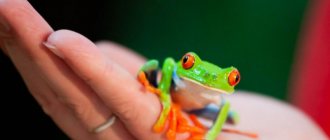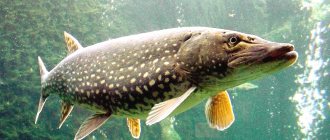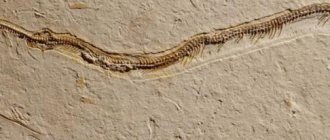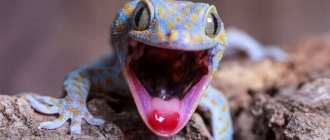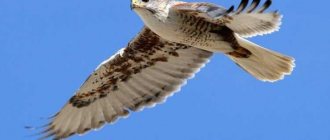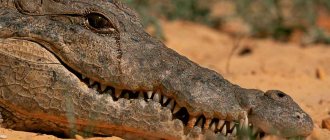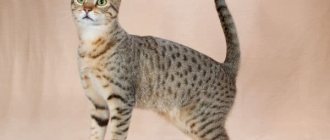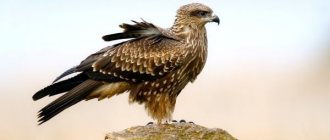There are more than 4.5 thousand species of frogs in the world. This number cannot be called constant, since every year scientists discover some species, while others, on the contrary, become extinct. The variety of toads and frogs, which surprise with their shapes and colors, remains unchanged. These amphibians evolved with their environment in mind, adapting to their environment in incredible ways that the most imaginative writers could not have dreamed up. There are many very unusual species of frogs living on Earth. In our list, you'll learn about frogs that make squeaky toy sounds, flying frogs, and even frogs whose reproductive organ is on their back. Oh yes, it's a wonderful world! Here are the top 15 most unusual species of frogs.
1
Glass frog with an “open” heart
This little frog has been making headlines recently due to his resemblance to Kermit the Frog from the Muppets. Adding to the hype is the fact that this species was only recently discovered. Kermit's "double" was discovered by Brian Kubicki, a Minnesota researcher on the slopes of Costa Rica. This species is unique for its transparency, as well as the sounds it makes. In addition, the glass frog's eyes are very similar to Kermit's eyes.
The scientist named the found species in honor of his mother Diana. The frog is approximately 2.5 cm long and is considered a subspecies of glass frogs, which are so named because of their transparent abdomen, which provides a view of the amphibian's internal organs.
2
Lifestyle
Glass frogs are predominantly nocturnal, and during the day they rest near a pond on wet grass. They hunt insects during the day, on land. There on land, frogs choose a partner, mate and lay eggs on leaves and grass.
However, their offspring, tadpoles, develop only in water and only after turning into a frog, they also come to land for further development. The behavior of males is very interesting: after the female has laid eggs, they remain close to the offspring and protect them from insects. But what the female does after laying is unknown.
Paedophryne amauensis
If we are surprised by the size of the Diana glass frog, what can we say about Paedophryne amauensis, also a recently discovered species. It was discovered a little less than 10 years ago; the size of the frog does not exceed 7 mm, which allows us to call this type of amphibian the smallest vertebrate creature on earth.
Due to its size, the frog resembles an insect. The color, similar to forest cover with dried branches, also adds similarities. It's not surprising that it took scientists a while to figure it out. The method that enabled the identification of the new species also deserves attention. The researchers used triangulation to locate the sounds and then collected the foliage in a plastic bag to determine the source of the noise. This is how the smallest frog in the world was found. Its habitat is the forests of Papua New Guinea.
3
Where does it live?
The habitat of this species covers the tropical regions of Central America, including the Andes, Sierra Nevada (in Colombia), Venezuela, Tobago, a large area of the Amazon basin and even the Brazilian Atlantic forest. Impenetrable swampy forests of Mexico, northern Paraguay, Argentina. This small amphibian feels great here.
The favorite place for these tiny creatures to live is the banks of rivers and streams that flow through tropical rainforests.
Desert Narrowmouth
This unusual species of frog resembles an animated film character or a wind-up toy. The desert narrowmouth is found in South Africa and Namibia, living in a coastal zone 10 kilometers wide. As a rule, they hide in coastal sands, as well as tropical or subtropical dried bushes. During the day, they bury themselves in the sand to a depth of 10–20 cm, hiding from the heat.
After waiting in the cool and damp sand all day, the frogs crawl to the surface at night. They especially love foggy nights when they can feast on larvae and insects. The desert narrowmouths created a real sensation after a video of them was posted online. It will not be difficult for you to find it and admire these amazing creatures.
4
Decorated slingshot
While some frogs prefer to spend their entire lives in disguise, others want to show off their true colors. One of these can be considered a decorated slingshot. Its name speaks for itself - this frog has something to “boast” about. It is also called the Argentine horned frog, the Argentine large-mouthed frog, and the Pacman frog.
Why Pac-Man, you ask? Yes, because this type of frog tries to swallow everything that is close to its huge mouth. The Decorated Slingshot's diet includes rodents, insects and even other types of frogs. Despite its minimum size of 15 cm, it is simply insatiable, with half the body area occupied by the slingshot mouth. People also call them “mouths on legs,” since from the front you can only see the mouth and limbs. There's nothing surprising about the bite force of a decorated slingshot - watch your fingers!
5
Evil Shieldback
Evil Copper frog
This 13 cm frog is native to parts of Argentina, Bolivia and Paraguay. She has a flat body with wrinkled, bumpy skin, bulging eyes, a huge mouth and a very bad temper.
During the dry season, corymbids hibernate, lying in the silt at the bottom of the reservoir. They shed their skin, which forms a shell around them. When the rainy season comes, this shell opens and the frog gets out into the wild.
Interesting Facts.
In case of danger, the shield back swells, stretches out its legs, opens its mouth wide, begins to yell and rushes at the enemy.
But the shieldback hunts from ambush, and it is very omnivorous. It is suitable for insects, snails, and other insects...
Hairy frog
To be honest, Trichobatrachus robustus scares us a little. This species of amphibian is also called wolverine frogs and dire frogs. What's really scary is its will to fight; if the frog is attacked, it will break its toes by using them as claws protruding from its skin (very cute, isn't it). Later, the bones fall off on their own, and the damaged skin heals. This is the only animal, other than Logan, naturally, that has such a defense mechanism.
Comparisons to the wolverine don't end with the bones that "fly" out of its limbs; the frog also has hair growths on the sides that are seen in males. During the breeding season, males grow hair-like dermal papillae with many arteries that help absorb more oxygen. This is necessary for the hairy frog to stay under water for a long time, when it protects the eggs laid by females.
This species can be found in central Africa and, although it is not critically endangered, the frog is at risk of losing its natural habitat.
6
Content
If you do not pay attention to the willful behavior, keeping and caring for the clawed frog does not pose any particular difficulties.
Aquarium
For clawed frogs, the aquarium should be rectangular, short in height and long .
The volume of water for one individual is at least 35 liters. If you plan to keep 2-3 frogs - at least 70 liters.
Attention! The container is filled with water right up to the sides - dropsy does not need open islands of land.
Water parameters
The water parameters should not contain nitrogen compounds and chlorine; the main indicators are as follows:
- temperature - 19...25 °C;
- acidity - 6.5–7.5 pH;
- hardness - 2–12 dGh.
Water is replaced by 1/3 of the volume once a week. The use of an external filter will reduce the frequency to once every 2 weeks.
View this post on Instagram
Publication from Manicure Studio. Novoazovsk (@nastya_matosova) Sep 6, 2022 at 1:47 PDT
Substrate or primer
The choice of substrate is not so much a rational necessity as a trick that owners go to in order not to use soil.
Spending a lot of time at the bottom, clawed amphibians stir up small fractions and swallow large pebbles. Pebbles fall into the frog's stomach and clog it, which can lead to the death of the amphibian.
A piece of dark fabric equal in size to the bottom of the aquarium is used as a substrate . It is allowed to decorate the bottom with stones or plastic plants glued to it.
When using river sand, the process of cleaning the reservoir becomes more frequent. In addition, sand clogs the filter. The best option is small pebbles .
Plants
And again we are looking for an alternative between living material and artificial ones .
Conventional aquarium plants will not be suitable, since frogs will quickly damage them with their sharp claws.
Plastic ones look beautiful, but they get more dirty, and you will have to wash them more often, and they can harm frogs with their hard edges.
Professionals advise giving preference to Anubias. All species of this plant have leaves with a strong structure.
However, it should not be planted in the ground, but in weighted pots. As a compromise, you can use artificial plants made from silk.
Shelters
Amphibians have a positive attitude towards shelters. All kinds of caves, coconuts, grottoes, and jugs are suitable for them .
The main thing is that the shelter is spacious, without sharp edges and holds firmly to the bottom.
Filtration
To ensure that the water always remains clean, which is what clawed frogs love, an aquarium with them needs a powerful filter , but it should not create a strong current in the reservoir.
This means that it is better to install an external model.
Please note that the amphibians themselves, demanding crystal clear water, do everything to pollute it. Such picky people!
Lighting
Their need for light is small. The duration of daylight hours is no more than 12 hours .
Living plants require more lighting than amphibians.
Attention! Bright lighting is contraindicated for Spur albinos - they can go blind from it.
Vietnamese moss frog
This type of frog is rightfully considered a real guru of camouflage. Life in tropical and subtropical forests, as well as freshwater swamps, has turned the frog's skin into excellent camouflage, resembling a moss-covered surface. Even the eye sockets of this amphibian are covered with camouflage pigment.
When a threat is seen, the frog curls up into a tight ball, making it completely invisible. In this form it is difficult to distinguish it from stone. On average, Theloderma corticale is 6–9 cm long, and each of their fingers has a suction cup that helps them grip slippery branches and rocks.
7
Diseases
Diseases affecting clawed frogs are largely associated with errors in care.
Poor water purification, low temperature, dirty food are the main causes of disease. What problems may arise:
- Sepsis, or “red leg” . An infectious disease marked by redness of the abdomen and blanching of the skin on the back. As sepsis progresses, the paws swell and ulcers appear. Treatment: baths with a solution of sulfadimidine (15 ml of medicine per 10 liters of water).
- Fungus , in which the affected areas are distinguished by growths of a cotton structure. Salt baths help kill the fungus.
- Dropsy . The main symptom is that the frog's body swells. The patient needs to be placed in a container with a solution of Gentomycin.
- Nematodes . Parasites enter the amphibian's body with food. The skin becomes gray, appetite disappears, and small worms can be seen in areas of peeling. Treatment uses drugs against nematodes (Piperazine or Panacur).
Funny and smart, clawed frogs, unlike fish, often become pets and almost family members.
They are given names, their lives are observed by young and old. With proper care, this warm contact can last for many years.
Terrible leaf climber
The name of this species of amphibians fully justifies itself. This frog is one of the most poisonous creatures on the planet. One 5 cm long individual contains enough poison to kill 10 to 20 people or 2 elephants. Just one gram of the toxic substance produced by the terrible leaf climber can kill about 15 thousand people. By the way, an article about the most poisonous frogs in the world was published on our website topcafe.su.
Scientists still cannot understand how such tiny creatures can produce such a strong poison. It is assumed that the whole thing is due to poisonous plants, consumed by beetles, termites and ants, which later become prey for leaf climbers. Captive-bred frogs cannot produce toxic substances that are only available to the wild. The alkaloid toxins that coat the skin of the terrible leaf climbers remain effective for a long time, even if the frog is removed from its usual food sources.
As for the victims of this type of frog, they kill everyone who dares to attack them, except for the snakes Liophis epinephelus, which are resistant, but not immune, to the toxins of the terrible leaf climber. This species lives in the Colombian rainforests, near the Pacific Ocean. The high population density of Phyllobates terribilis (scientific name) is due to its small habitat, however, the destruction of forests in the area has led to the threat of extinction of this unique animal.
8
Appearance
The frog has a large and flat head, on the side of which there are bulging eyes . Along with other land vertebrates, frogs have upper and lower eyelids. Under the lower eyelid of the amphibian, a nictitating membrane is found, which is called the “third eyelid”. Behind the eyes of an amphibian there is a special area covered with thin skin called the eardrum. Two nostrils with special valves are located above a huge mouth with small teeth.
The frog's front legs are characterized by the presence of four rather short toes. The hind legs of the animal are strong and well developed, equipped with five fingers, the space between which is covered with a specially leathery membrane. There are no claws on the animal's fingers. The only excretory part is located in the posterior region of the frog's body and is represented by the so-called cloacal opening. The frog's body is covered with bare skin, quite thickly lubricated with special mucus, which is abundantly secreted by the animal's numerous special subcutaneous glands.
This is interesting! The size of frogs depends on the species, so European frogs most often do not exceed one decimeter, and African goliath frogs are a kind of record holder in terms of size, therefore, with a half-meter size, they weigh several kilograms.
The size of an adult frog varies markedly depending on the species, but most often varies between 0.8-32 cm. The color of the skin is also very diverse and can be brownish, yellow, green or an unusual variegated color. Many members of the family prefer to camouflage themselves with herbaceous vegetation, foliage or branches, and therefore have characteristic green, gray and grayish-green skin.
War coloring, as a rule, indicates that the frog is poisonous, which is explained by the presence of special glands on the skin that produce substances that are toxic and harmful to human or animal health. Some frogs easily mimic, imitating dangerous amphibians to escape from enemies.
Indian tiger frog
Fortunately, not all yellow frogs are lethal to humans. Some will simply entertain you with their inimitable “vocals”. The tiger frog is brightly colored and is found in the southeastern and southern regions of Asia. During most of the year, these amphibians are dark olive in color. However, during the mating season, the males simply blossom, turning into bright yellow beauties. They also develop vocal sacs under their throats, with which they attract females. TopCafe advises you to watch this video:
With a body length of approximately 15 cm, this species is the largest of the Indian frogs. In the 90s of the 20th century, people began to grow them for food. In addition, they were artificially bred in Madagascar, diversifying the already rich fauna of the island.
9
Round-tongued
Representatives of the family Discoglossidae, for example, the red-bellied firebird (Bombina bombina), exhibit interesting behavior. The species received its name for its characteristic cry, reminiscent of a dull “kum... kum... kum.” The toaded toad, or as it is also called, kumka, is the most poisonous species among domestic amphibians; it has a bright black and red color of the abdomen. In the animal world, the combination of black and bright colors (red, yellow, orange) is a kind of danger signal. In case of danger, this amphibian takes a special protective pose: it arches its back and at the same time raises all its legs above its body (becomes like a small rocking chair), showing off its abdomen - this is how the toad warns of its danger.
Red-bellied toad
Another unusual amphibian common in Western Europe is midwife toads (Alytes obstetricans and related species), although they are not frogs at all from a biologist's point of view. In these species, mating occurs on land. The female lays eggs collected in threads, the male picks them up, wraps them around his thighs and carries them in this form for up to 6 weeks. When the tadpoles emerge, the male is already in the water; the larvae rupture the egg shells and emerge into the water.
Iberian midwife toad (Alytes cisternasii)
Brazilian slingshot
The Brazilian slingshot, also known as the changeable slingshot, has a mouth no smaller than the decorated slingshot. As for its reputation, it is perhaps even more aggressive than the previously described species. Disguised in leaf litter, this 20cm frog sticks out just its head, ready to grab anyone who passes by. Some individuals die because of their greed. Slingshots grab prey that is too large, however, they do not release it, preferring to die from suffocation along with the victim, which remains sticking out of the mouth.
She will attack anything, including the legs of animals or people passing by. Here's our advice: don't tease the beast!
10
Black-footed copepod
In English, they are called Wallace's flying frogs, which already says a lot. If they don't fly, they definitely plan. These amphibians have particularly long fingers with wide membranes, which are used as parachutes when jumping. They also have skin flaps on the forelimbs, which are necessary for better surface grip.
Black-footed copepods spend almost their entire lives in trees, descending to the ground only to mate and lay eggs. They use their gliding abilities to evade pursuit by jumping from branch to branch. In one jump, copepods can cover a distance of 15 meters. Although they are not the only amphibians with such abilities, black-footed copepods are definitely one of the largest, reaching up to 10 cm in length.
Paradoxically, the future of these frogs directly depends on the future of Asian rhinoceroses. The fact is that copepods lay their eggs in fetid pits used by rhinoceroses for rest. With Asian rhinoceroses nearly extinct, this could push Wallace's flying frogs to the brink of extinction. TopCafe hopes that in the near future the population of rhinoceroses, like these unusual frogs, will increase.
11
Sexual dimorphism
Permanent and seasonal sexual dimorphism is a characteristic characteristic of many amphibians, including some species of frogs. Some poison dart frogs are characterized by enlargement of the finger pads of males, which is used by the amphibians when tapping on the ground and helps to actively attract females. Males of some species are distinguished by greatly enlarged eardrums. Seasonal dimorphism is caused by the presence of so-called gonadotropic hormones in the animal’s body.
This is interesting! There are species in which, upon visual inspection, it is impossible to determine their gender in accordance with only one characteristic, so it is necessary to compare several morphological characteristics at once.
One of the most striking and pronounced sexual characteristics that are characteristic of male frogs is the formation of nuptial pads as a response to changes in the hormonal levels of the testes.
In the frog, such pads are formed on the lower part of the forelimbs, on the fingers and near the mouth, due to which all mature males remain in a mated state with the female even when there is strong movement of water or attack by other animals.
Venezuelan pebble toad
Pebble toad is the perfect name for this small amphibian. It's all about its habitat and defense mechanisms. It lives on rocky slopes, and since this toad is not capable of flying, when danger arises it tenses its muscles and jumps down. Due to its minimal weight, as well as strong muscles, such falls do not harm the pebble toad. She lands in crevices or puddles, remaining alive and healthy. This strategy is designed to protect against predators such as tarantulas.
Not only does it roll down the slopes like a pebble, but the toad also resembles it in its appearance. The dark color of the toad, whose length does not exceed 2.5 cm, allows it to camouflage itself among rocks, and when rolled up it is no different from a small stone.
12
Surinamese pipa
Also known as the American pipa, this toad is one of the most bizarre amphibians with a disorienting (yes, disgusting) method of reproduction. But first, let's talk about its shape. The Surinamese pipa is almost completely flat, with small eyes protruding. In addition, she does not have a tongue or teeth; instead of croaking, she literally rattles the bones in her throat, making a clicking sound. The weirdness of the pipa doesn't end there.
This species of amphibian breeds underwater. During the mating process, females release 3–10 eggs at a time, which land and become embedded in her back. Having penetrated the skin, the eggs develop there, going from tadpoles to toads. That's right, tiny toads burst out of the mother's back. It's very strange, but entertaining enough that you should watch the whole process on video.
13
Purple frog
It is not immediately possible to recognize this bizarre creature as a frog. It's all about its shape, which resembles a small blot. It lives in the Indian mountains of the Western Ghats, and the closest relative of this amphibian is located in the Seychelles, off the east coast of Africa. This amphibian has evolved independently over the course of 120 years, which explains the frog's strange appearance. The scientific name includes the word “nose,” which is understandable since the creature has an elongated snout.
The shape and even the purple color are quite understandable, since the frog spends most of its life underground, feeding on termites. It is on the surface only 2 weeks a year, crawling out of cover during the monsoons. During this period, she mates, after which she crawls underground. This routine allowed her to hide from prying eyes for a long time. Scientists were able to describe the purple frog in detail only in 2003.
14
Natural enemies
Natural enemies of frogs include leeches, larvae of swimming beetles and dragonflies, as well as predatory fish, including pike perch, perch, bream, pike and catfish. Frogs are also actively hunted by some species of reptiles, including grass snakes and vipers. Amphibians very often become easy prey for adult storks and herons, crows and waterfowl, some mammals, which include muskrats, rats and muskrats, shrews and representatives of mustelids.
Malagasy rainbow frog
This species of frog from Madagascar goes by many names, including painted frog, rainbow burrower, red rain frog and even Gottleb's narrow-mouthed frog. But no matter what name they give this amphibian, it remains just as colorful. Its color includes red, orange, black, green and white patterns.
The creature is famous not only for its coloring, but also for its excellent climbing skills. During the day, the amphibian burrows in the sand near streams, and at night it climbs onto rocky ledges, climbing walls thanks to the sharp claws on its forelimbs. This is one of the few frogs that can burrow and climb.
Unfortunately, the painted jumper is in danger of extinction, as it is of great value to lovers of exotic animals who are willing to pay a lot of money to catch them.
15
Tree frogs
One of the few amphibians that evoke sympathy among most people are tree frogs - representatives of the tree frog family (Hylidae), which live mainly in the tropics. Their special feature is suction discs on the fingertips, which make it possible to stick to vertical surfaces. Common in the Belgorod region and Europe, the common tree frog (Hyla arborea), which also has another name - “wood tree”, has a soft green color that can vary from yellowish to almost black.
Common tree frog
All articles
Malayan horned frog
During evolution, this subspecies of horned spadefoot has acquired a form that allows it to camouflage itself in the leaves of the forest floor. Additional horns on the eyes and nose give a resemblance to the pointed edges of foliage. Megophrys nasuta lives among leaf litter in the rainforests of Southeast Asia. Camouflage is necessary for the frog to hide from predators and intended prey. Walking through the forest, it is unusually difficult to notice.
The amphibian spends a long time motionless, waiting for the approach of the victim, after which it strikes with lightning speed. The usual prey of these amphibians is insects, however, they do not disdain lizards, spiders, other frogs and even small rodents. Starting from the variegated color and ending with the folds on the skin, it is intended to provide the frog with camouflage in the leaves, but once it is removed from its natural habitat, it will begin to look like a bat.
Area
The scientific world learned about the clawed frog in 1802, and residents of the places where it lives have long been familiar with it as a delicacy.
Their habitat is ponds, lakes, swamps of Kenya, Congo, Uganda, Cameroon . In these countries, frogs are specially caught to prepare a delicious dish from them.
They lead an aquatic lifestyle and never go to land unless absolutely necessary. They are represented by different species, differing in size and color.
Appearance
The clawed frog has a small head, a large body and muscular hind legs. The length of an adult can reach 12–13 cm .
The flattened muzzle has round eyes that do not have sharp vision. To breathe, frogs need atmospheric oxygen.
On all four paws, the toes are connected by membranes, and strong claws grow at their tips.
Owners need them to protect them from enemies, tear apart caught prey, and hold them on plants.
Behavior and lifestyle
The smooth clawed frog, although it belongs to the amphibians, comes to land only if there is a need to change the reservoir .
Favorite habitats are bodies of water with slowly flowing or standing water.
During the day she is inactive, and at night she goes hunting. A predator by nature, the frog itself has excellent defense in the form of toxic mucus. If you can’t hold it in your hands, it will definitely slip out.
The mouth of a dog that tries to grab such prey becomes covered with thick foam, preventing normal breathing. However, owls, cormorants and herons calmly hunt the frog.
In the aquarium , he controls the territory, shows nervousness if he is afraid of his neighbors . It begins to rush around the pond, stirring up the water.
Unusually mobile and gluttonous. Swimming quickly around the aquarium, she devours everything that is suitable for food .
The snags and decorations lying at the bottom will definitely be turned over, and more than once, and the plants will be dug up or torn.
Lifespan
How long do the unusual inhabitants of your home pond live? In favorable aquarium conditions, where there are no dangerous enemies and the owner carefully monitors their health, clawed frogs can live 14–15 years .
Sexual dimorphism
Puberty in frogs occurs unevenly. Females are ready to mate at the age of 6 months, males mature at 9–10 months.
In a mature female, the ovipositor is clearly visible, resembling a tail in shape. In addition, she is larger than the male.

